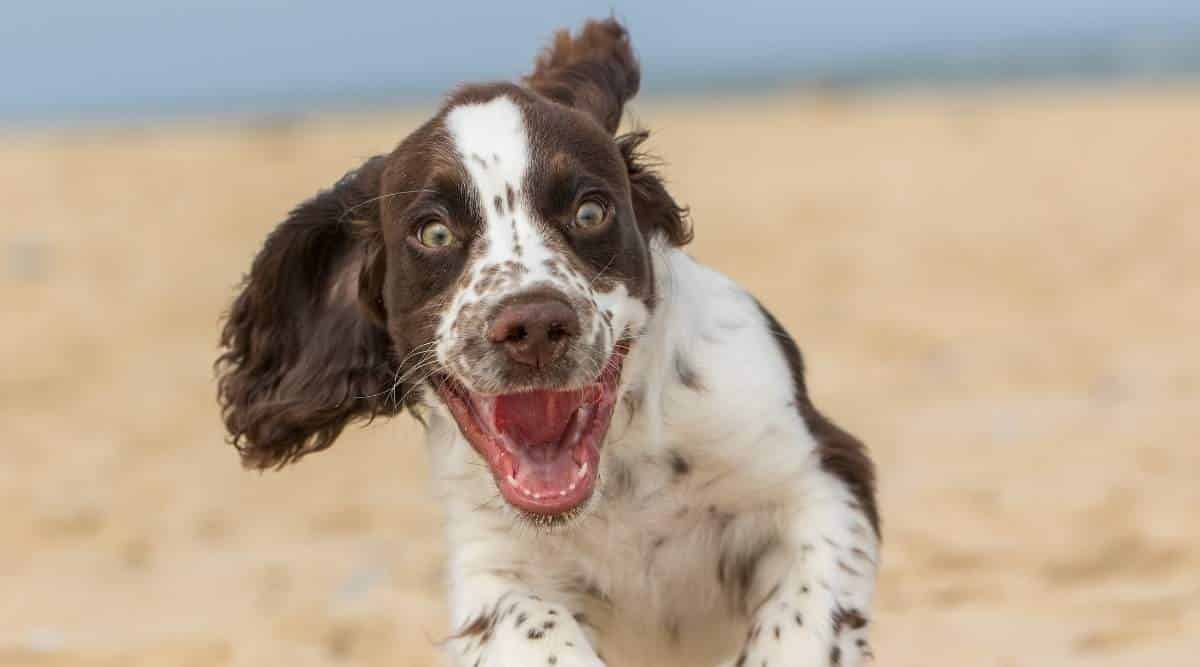Cane Corso Dog Breed Information: Facts, Traits, Pictures, & More
When you purchase through links on our site, we may earn a commission. Here’s how it works.
Thinking of adopting a Cane Corso puppy, or rescue dog? This isn’t the perfect breed for every family, so there’s some important breed facts that you’ll want to know before you do. The Cane Corso is an Italian Breed of Mastiff that were originally bred to protect property and help with farm tasks. They are natural protectors which makes sense given their name roughly translates to “bodyguard” in Latin.
Table of Contents
The Cane Corso is even-tempered, fiercely loyal, and intelligent. Their dominating appearance gives way to a dog who is easy to train and eager to please their owners. They are easy to train as puppies but tend to have a willful and socially dominant personality. Cane Corsos usually do best with experienced owners who have no problem teaching basic obedience commands and rules to their pets.
This breed has plenty of energy and requires a home that has a lot of space to run and play. They are at their best when regularly exercised and given some type of “job”. If left cooped up in a house all day it can lead to some undesirable behaviors to keep themselves occupied. They are purebred dogs but that doesn’t mean they can’t be found at rescue shelters or groups. Ready to learn more about the breed? Let’s jump in!
Breed History
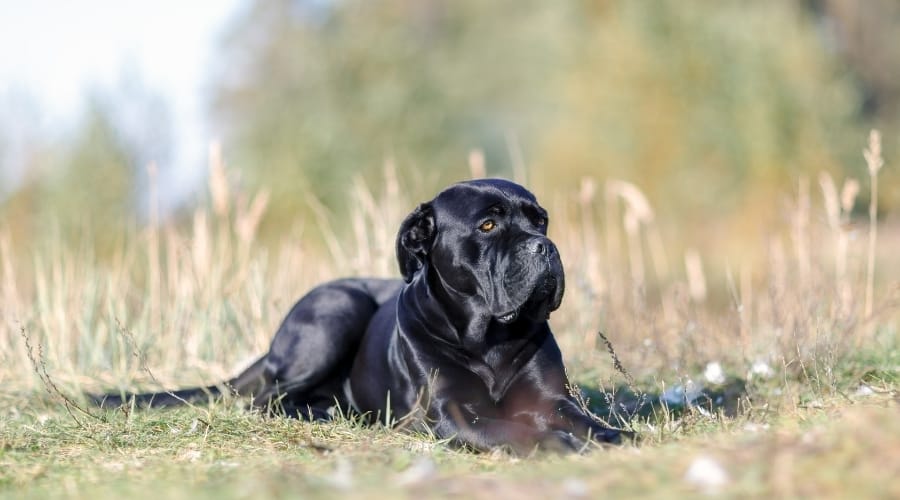
The Cane Corso traces back as far as Ancient Rome. They are descendents of the Roman Molassian, a Roman war dog. In fact, the name comes from the Latin word, “cohors” which means “protector” or “guardian.”This makes sense since they were originally bred to be hunters and protectors.
They actually played a pretty big part in Roman warfare. After the wars, their skills were used towards hunting, guarding, and farming. They would guard the livestock and the farm buildings. Another interesting task they had on the farm dealt with swine breeding. When a swine would give birth they would actually block the mother so a farmer could come and get her litter before she could hide it.
Corsos would also help keep wild boars under control and protect cattle from biting on a bull’s ear or nose. This practice became known as “bull-baiting.”
Their population began to decline in the 20th century for several reasons. World Wars, natural disasters, and the collapse of the mezzadria system of share-cropping were all major changes. Each of these impacts changed the rural landscape of Italy and decreased the need for the breed. This caused them to almost become extinct by the mid-20th century.
In 1973, Giovanni Bonnetti brought the breed to the attention of Dr. Paolo Breber. Dr. Breber began a breeding program the next year. The Società Amatori Cane Corso was formed in 1983. Cane Corsos first came to the United States in 1988. The breed was officially recognized by the Italian Kennel Club in 1994, the World Canine Organization in 2010, and the American Kennel Club in 2010.
The breed is now ranked as the 40th most popular of 193 recognized dog breeds.
Temperament
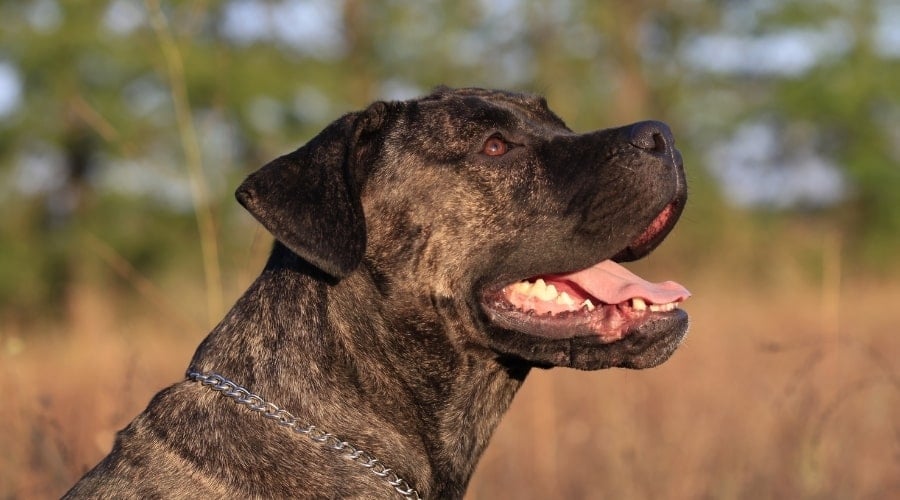
Cane Corsos are very intelligent, eager to please, and loyal. Bred to be protectors, they are fiercely protective of their owners. With the right training can be social and friendly to other dogs and people. Heavy socialization, while they are puppies, is key with this breed. The Cane Corso Association of America describes the breed as “unique, intensely loyal, protective, sensitive and serious.”
Corsos require an owner that can take time to train them properly and firmly. The breed has a naturally dominant personality. If the owner trains firmly while the Corso is young, they will be a great family dog who will provide protection and love to the owner. However, if the owner is seen as weak, the Corso will take charge.
They were bred to share work with their owner and spend most of their time with their family. As an active dog, are best suited for families who can give them both attention and tasks. They will not do well in a home where they are left alone for long periods of time. Corsos that are not given tasks or jobs can become destructive.
Cane Corsos get deeply attached to their owners, but the Cane Corso Association of America notes not all will “wear their heart on their selves” as other dog breeds do. They are very well-tuned into their families’ emotions, meaning if you are sad, angry, happy, or proud, they will think they are the cause for it.
Some will be more reserved while others are very outgoing but very few are overly affectionate. Instead, they show their affection by being in the same room as their favorite people, they enjoy petting and cuddles but are not overbearing.
Size & Appearance
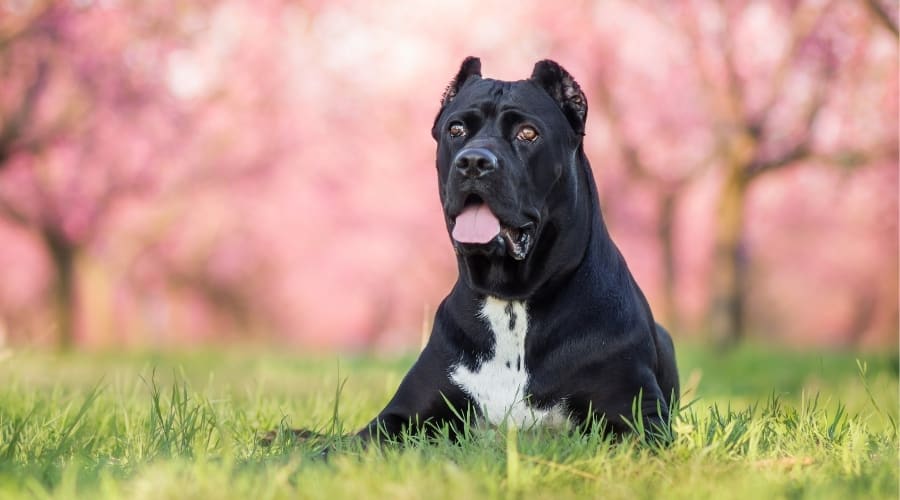
Cane Corsos are a large breed dog but can grow to “giant” status too. Standard females will weigh anywhere from 88-99 pounds and standing between 23-26 inches. Standard males weigh slightly more usually between 99-110 pounds and standing between 24-28 inches. They are strong and muscular, with a more rectangular shape making them slightly longer than tall. They generally live 9-12 years.
Their head is a dominant feature of the breed with a very deep strong and square muzzle and a forehead that is considered flat, unlike other mastiff breeds they do not have a lot of wrinkles. All Corsos have brown eyes that sit evenly apart on their head. Their expression is “keen and attentive”. When it comes to their ears, they are un-cropped with a triangular shape with a slight drooping. The breed’s neck is strong and muscular and as long as the head.
Some Corsos have cropped ears, and others do not. This is from the man-made practice of “ear-cropping.” There is a wide amount of controversy when it comes to the practice of ear cropping. Some veterinary associations oppose, but the AKC states it’s a necessity in certain breeds. Cropping is primarily used in working dogs, so that their ears don’t get snagged on branches during tasks. Depending on the breeder, your Corso may or may not have cropped ears.
Coat & Colors
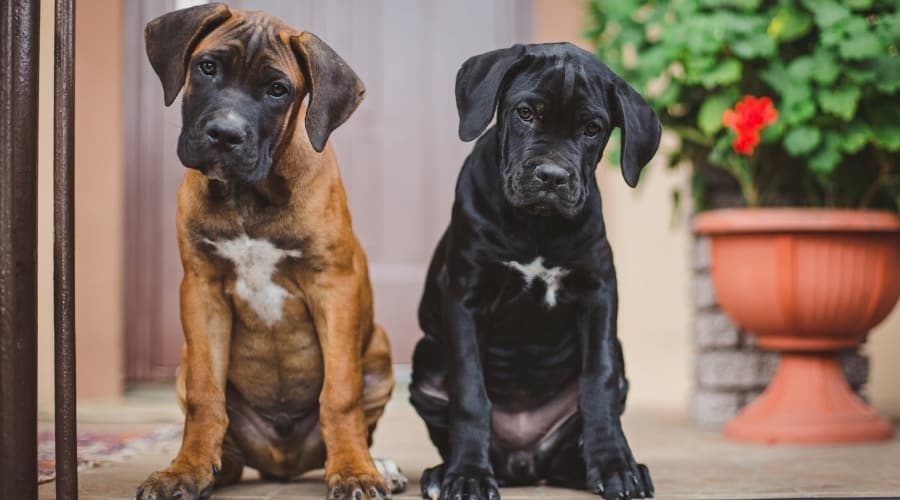
Cane Corsos have a short, shiny, stiff, and very coarse coat with a light undercoat. They also get a very thick undercoat in the winter, which causes them to shed heavily twice a year.
They can come in various colors. Breed standard allows for black, light gray, or slate gray, stag red, and light or dark fawn. They can also have a dark wheat color which results in stripes in different shades of fawn or gray. Fawn colored and brindle Corsos will have black or gray on their muzzle. Some can have a small white patch on their chest or on the tip of the toes or bridge of their nose.
Exercise Needs
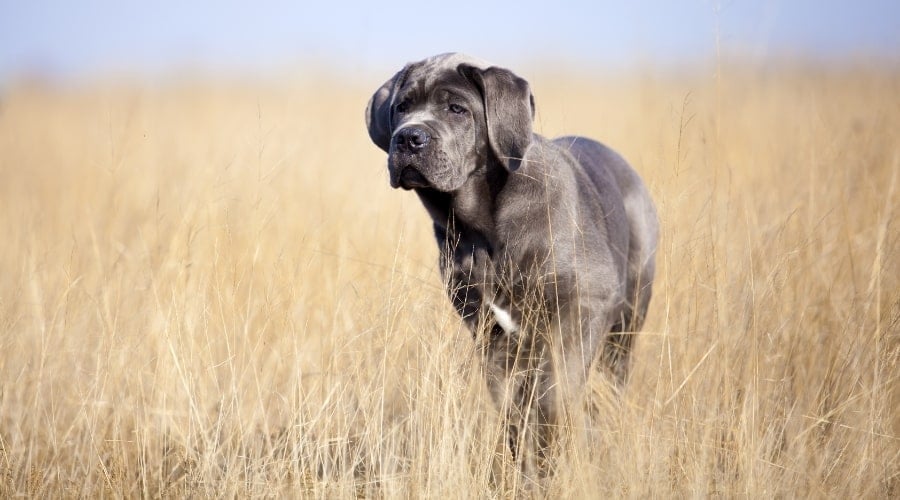
Cane Corsos were bred to be working dogs. This means they need a lot of exercise and activity. On average owners should be able to commit to about 60 minutes of daily activity, and count on walking them 10 miles a week. This is very similar to many other dogs with mastiff ancestry.
Exercise is absolutely critical with this breed. If a Corso doesn’t have enough exercise, they will find things to keep them busy. They are also much easier to train when adequately exercised. Physical stimulation allows them to remain calm, and more adequately listen to the commands you’ll be teaching them as an owner.
Many Corsos end up in shelters because owners underestimate the exercise requirements for this breed. Their energy levels are different from other giant breeds, and they are nowhere near as lazy.
Living Requirements
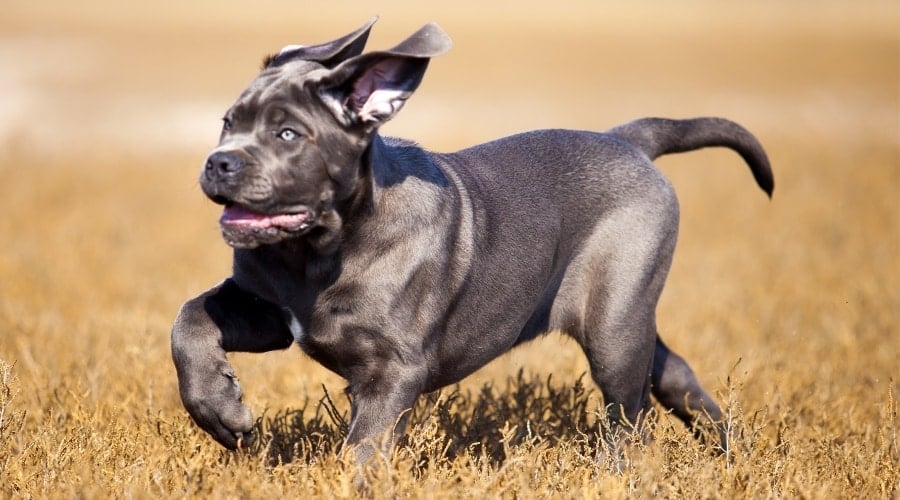
They work best in a house with a fenced-in backyard. An electric fence will not be able to contain this strong dog if they see a squirrel or bird they want to go after. While they do require daily walks, it’s important to not subject them to intense exercise or activity while they are young as their skeleton is still developing and could cause damage later in life.
We don’t recommend the Corso for apartment living. If you have a small living space, without access to an outdoor living area where your pup can exercise, consider a different breed. Smaller living spaces are only recommended if you have access to a larger outdoor area where your Corso can roam at some point during the day.
Playing is another great way to exercise your Cane Corso. Fetch, tug-of-war, hunting, and tag are all great ways to keep your Corso stimulated and exercised. You’ll likely need an assortment of dog toys that can withstand intense play sessions due to their powerful jaws and bodies.
Training
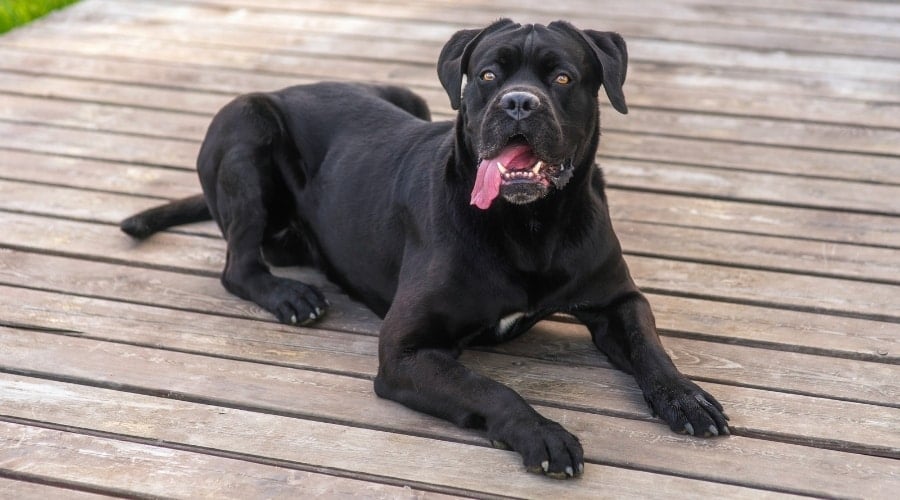
Training is a very important part of a young Cane Corsos development. As puppies, they are easy to train as they are eager to please, intelligent, and have a good attention span. They require heavy socialization and training at a young age to make sure they are welcoming of other people and dogs. If they are not trained by someone who asserts themselves as the leader, they will view themselves as the “alpha”.
As with most independent breeds, we recommend taking 8 to 10 weeks of obedience training at a local training center. Also consider consulting with a dog trainer before ever getting your puppy. It is important that basic household rules and obedience are established early on otherwise the Corso will think he is the owner. CCAA advises the training must be done by the owner. Not a boarding school.
They are very loyal to their owners and need to see them as dominant in order to follow the rules. Corsos are very self-assertive and if they believe they are the alpha, that could make them aggressive to visitors to your house or other animals. We also recommend crate training, especially for this breed. This will allow them to learn boundaries, even as young puppies.
Health
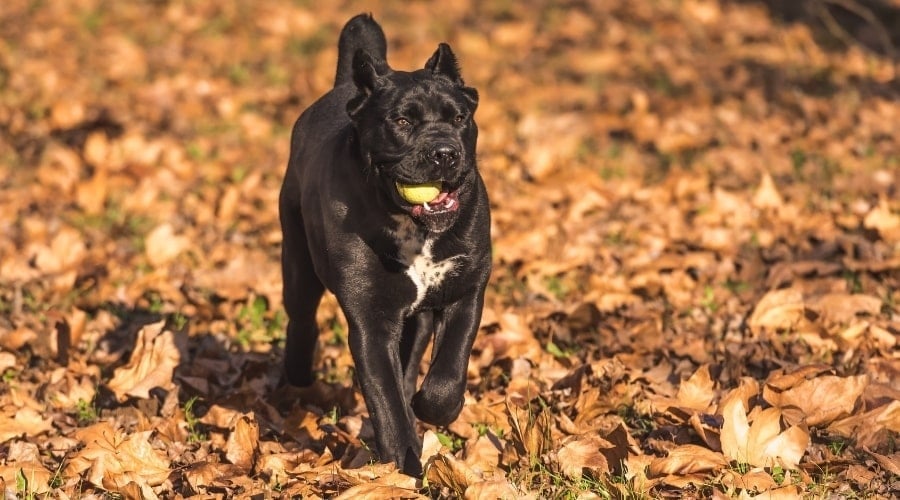
Cane Corsos are generally pretty healthy dogs but like most purebred dogs they do come with some health risks. As a large dog, they are susceptible to developing bone and joint issues within the first year of their lives, that is because of the rapid growth they experience during the first year of their life. It is important owners remember not to over-exert them during their early years. We also recommend getting pet insurance for your Cane Corso to help offset expensive medical bills.
Hip Dysplasia
They are at medium risk to develop this condition. Hip Dysplasia is a genetic disease that causes mild to severe changes to the inner workings of the hip joint. It’s when the ball portion of the femur aligns poorly with the pelvis hip socket resulting in a very painful and expensive condition to treat.
Entropion
The breed is at a medium risk of developing this eye disease. Entropion is a disease of the eyelids where the lower or upper eyelids roll inward. This can cause pain and swelling of the eyes because of the irritation of the eyelashes hitting the cornea. It can also lead to ulcers on the cornea which can cause intense pain, vision impairment and worst case scenario, loss of the eye.
Gastric Dilatation Volvulus
They are very susceptible to this disease more commonly referred to as bloat. This is a very serious condition that must be treated quickly, that’s because it causes a sudden increase in stomach gas and twisting causing the blood vessels that supply the stomach to become twisted. This leads to irreversible stomach death, shock and release of deadly toxins if it is not treated.
As with most purebred dogs, only purchase from a breeder who can prove the parents have hip evaluations that are excellent, good, or fair from the Orthopedic Foundation for Animals as well as eye clearances from the Canine Eye Registry Foundation. An evaluation from a vet does substitute for genetic testing.
Nutrition
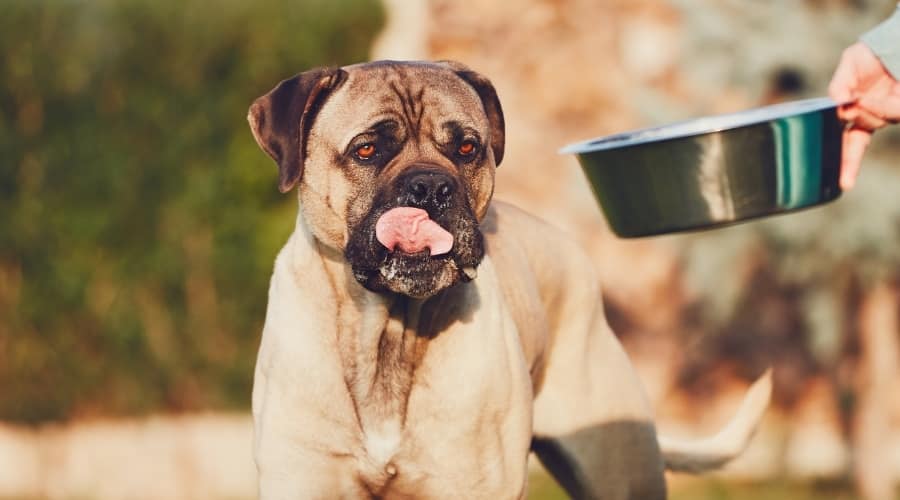
The energetic Cane Corso requires a diet that includes good protein. Be prepared to spend about $1,000 a year, or $84 a month to feed your pup. They require 2100 calories each day, that number can be slightly lower for older Corsos and slightly higher for younger growing Corsos.
The Association of American Feed Control Officials recommends 22 percent protein growth for puppies and 18 percent protein growth for adults. The food should also include 8 percent of fat for puppies and 5 percent of fat for adults. Puppies should be fed three times a day while two-times a day will suffice for adult dogs.
It’s recommended they eat 4 to 8 cups of dry food per day, that number can be less or more depending on the dog. It is recommended to only keep the food down for about 30 minutes as free feeding can cause overeating and as a result, an overweight dog.
Grooming
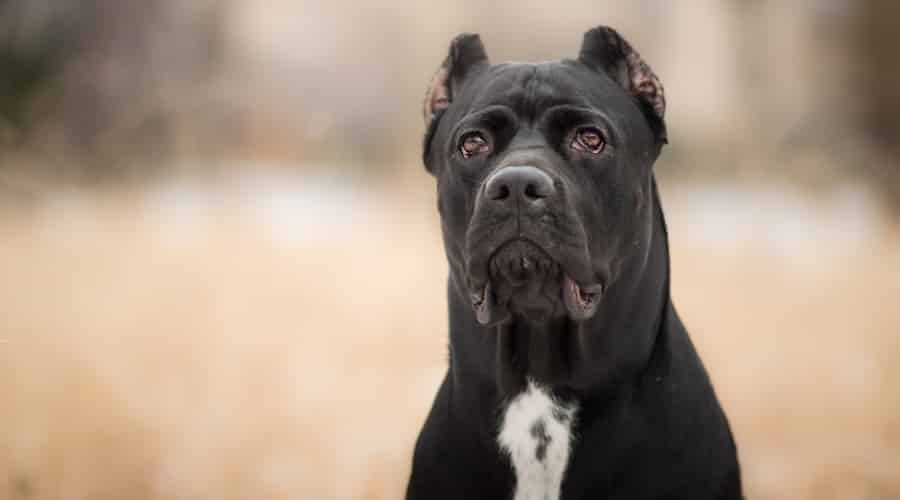
Maintaining proper grooming is important to keep this breed healthy and happy. However, it can be difficult at times due to their high activity level. It is best to bathe a Corso every 4-7 weeks or whenever needed, they should be brushed 2-3 times a week to remove any dead hair and maintain their naturally glossy coat.
They typically aren’t a high shedding breed but twice a year they shed their coat, during that time you can use a shedding blade to clear some of their topcoat.
Ears should be cleaned every 3-4 days to clear out any earwax or debris, an easy way to do this is by taking a cotton ball dipped in some type of oil and starting at the ear flaps before moving into the inner year.
Their teeth should also be brushed every 2-3 days to remove any tartar and plaque and it doesn’t really matter what motion you use as long as you do it and make sure to only use dog toothpaste. Yearly dental cleanings by veterinarians should also be completed to ensure optimal dental health.
Breeders & Puppy Costs
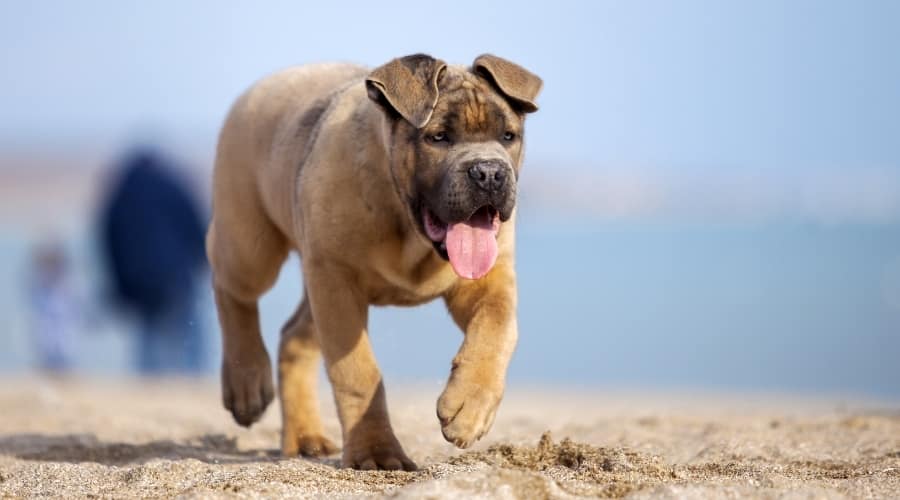
Cane Corsos can vary in cost depending on whether you adopt (which you should) or buy from a breeder. Either way, make sure you pick the perfect name for your Cane Corso. It will typically cost around $300 to $500 to adopt a Corso from a shelter or adoption agency, but with the growing popularity of this breed, good luck finding one there. These costs are typically just to cover the cost of caring for the dog beforehand.
It gets significantly costlier when you purchase straight from a breeder. Depending on the breeding, a Cane Corso can cost between $1,500 and $4,000. When purchasing from a breeder, make sure they provide you with the full genetic history of the puppy’s parents. If they refuse to provide proof that the parents have no hip or eye problems, run, as you could end up paying a lot of money to help fix hip dysplasia or eye problems later on.
Rescue & Shelters
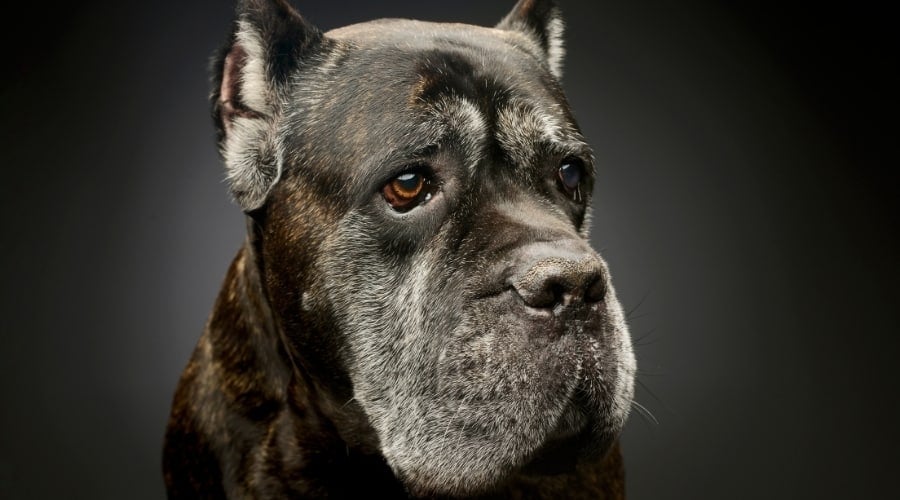
Unfortunately, many Cane Corsos are neglected or left in shelters when families realize the dog is too much for them to handle. This is usually because of poor training as a puppy. Fortunately, there are several rescue organizations that cater specifically to the breed.
The Cane Corso Rescue Inc is a great place to start if you are considering adopting a Corso. The organization started in 2005 and has rescued and adopted more than 1,500 Corsos since then all across the country.
Must Love Corsos Rescue is another non-profit committed to helping neglected or abandoned Corsos find their forever home. This is a newer organization starting in 2018 but are just as committed to helping Corsos find their forever homes. If you can’t find what you are looking for at a Corso rescue, consider looking at Mastiff rescues. Because the breeds are similar, it’s quite common to find Corsos in Mastiff rescue facilities.
If you are open to considering a Cane Corso mix, your opportunities for a great dog at a reduced cost will drastically increase. There are plenty of great mixed breeds, like the Pit Corso.
As Family Pets
Given the right training, Corsos can be excellent family pets. Here are some highlights you’ll need to be aware of if you intended to welcome one into your home.
- The breed is fiercely loyal to its owners.
- They are loving dogs when it comes to their families.
- As a working breed, they need tasks to stay mentally challenged.
- The breed does best in homes with large, fenced-in backyards.
- With guardian tendencies, they require heavy socialization at a young age.
- They can do well with children and other pets if they are introduced at a young age.
- The breed needs a firm owner that can take charge of training at an early age.
- They can do well in multi-pet households if socialized early.
- If not socialized early, they are typically best in a one-pet household.
- They have a tendency to guard and protect their own territory.
- Due to their independence, they aren’t recommended for first-time dog owners.
Final Thoughts
Very few dogs have such a long and storied history as the Cane Corso. They were first bred as a working dog to take on the frontline in battles during Ancient Rome, then to help tend farms and protect the livestock, the bred survived almost extinction to become a strong, majestic, and intelligent dog.
This breed can be a wonderful pet if they are given proper training and attention at a young age. Corsos are fiercely loyal and will make it their mission to protect their home and owners but require a lot of work when they are young to ensure they are trained properly.
The Cane Corso is best for experienced dog owners and must be taught obedience and rules at a young age. If a Corso does not receive correction from owners while young, he may think he is the owner. This may result in aggressive or undesirable behaviors. Corsos are not the perfect dog breed for everyone but given the right training and attention, they will display love and protection for families.



